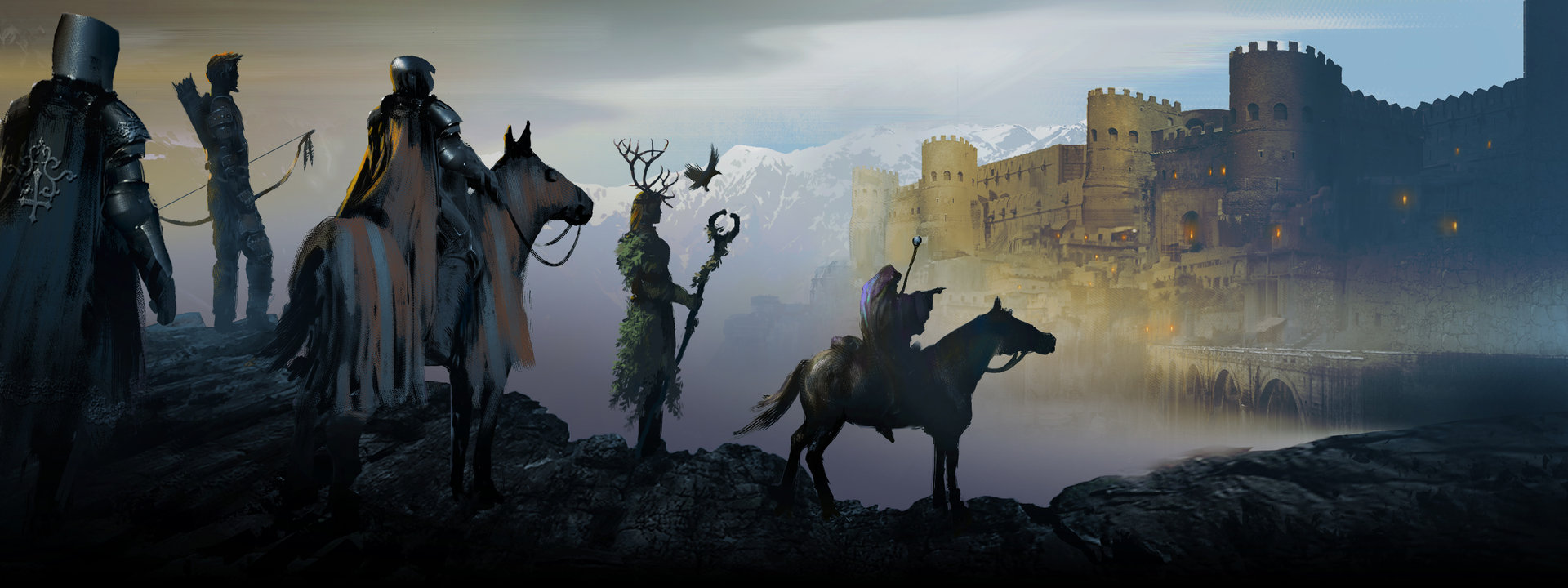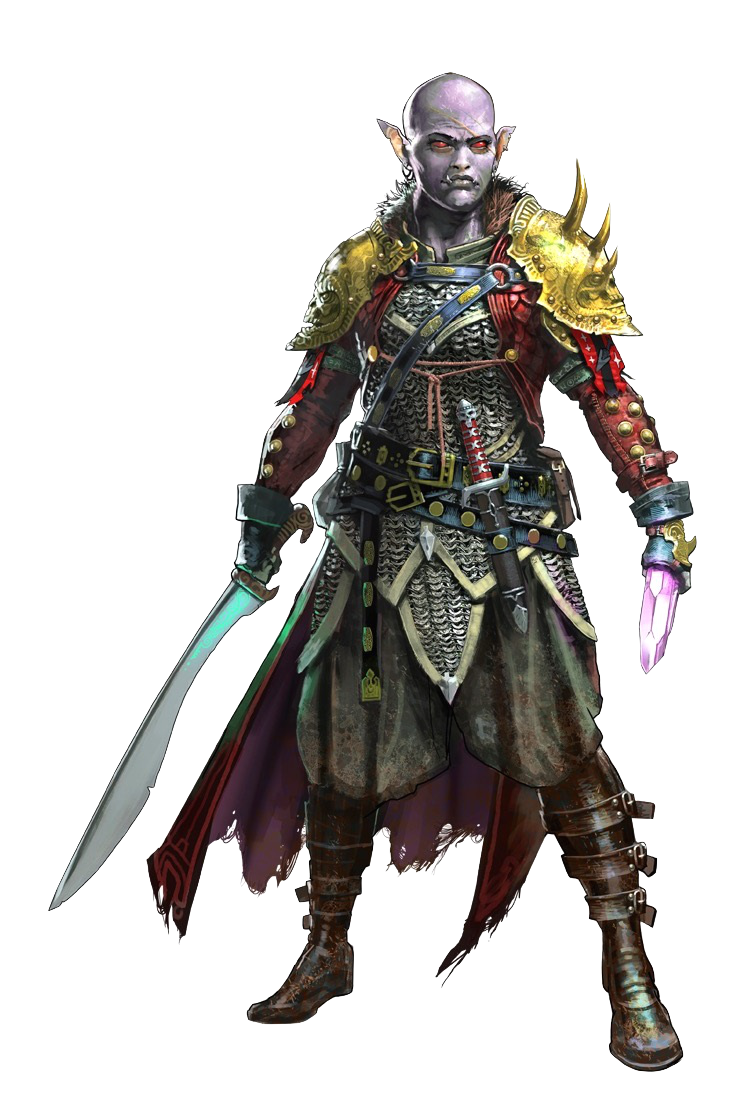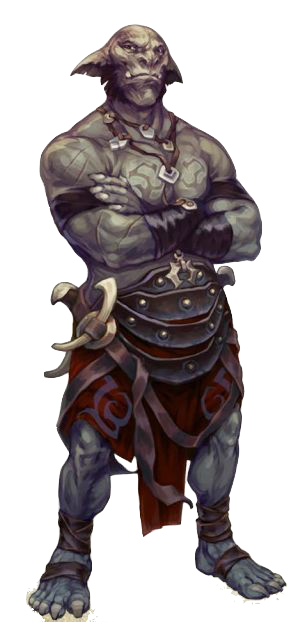The Isagorn (Hobgoblins)
The Goblinoid races are much maligned in the West, but none more than the Isagorn "hobgoblins" of Hariel Majour.
Possibly the most misunderstood of the humanoid races, Goblinoids come in an expansive variety of forms and social structures.
Hobgoblins are the most organized, with a strict militaristic hierarchy. Unlike similar beings from the classic Multiverse, the Isagorn are a proud people who work to rise above societal prejudices (they consider "Hobgoblin" to be a pejorative).
The do, however employ the services of their more savage cousins, and for this they will be forever criticized. In Golthenya, the Isagorn (and their cousins) replace Orcs as the multitudinous horde race. Though Orcs exist, they are far less prevalent and have a difficult time maintaining tribal bonds.
Known by their racial name - ISAGORN, these militaristic but principaled beings are possibly the most misunderstood in all Hariel. They are also more numerically prominent than in most campaigns, and are available as a Core PC Race (use Volo's Guide for character generation).
The Isagorn are broken down into three major sub-groups: The Nentiak, The Baradien, and The Ruttiak.
In Hariel Majour, up until several thousand years ago, the Isagorn were practically unseen in the land, as they called the Blight their home, almost exclusively. Here they fought with the Blight Dwarves over territory, and often even fought with the other goblinoid races for superiority. It was The Sundering that spread them out, as the shockwave that crippled the mountain also sent ruinous vibrations throughout the mountain homes of the Isagorn. As their homes collapsed around them, the dwarves took the opportunity to strike. These combined setbacks drove many (well more than half) the entire Isagorn population south. Their first major land-grab was the military outpost of Narfell.
ISAGORN ECOLOGY
All Isagorn, as with the entire Goblinoid species, are thought to have been created by the gods as servants and menial laborers. Allegedly their ancestors served within the holy cities literally inside Celene, though few records of this pre-history exist. This would also explain the fact that most of the race originally lived within close proximity to Mount Celene, within the Blight range.
All the following sub-classes of Isagorn are said to have been servants to the gods, their racial differences having not emerged until many thousands of years after Celene set down on Gothenya (descending from the very heavens above, if legend is to be believed).
Nentiak
The most prevalent race, your “standard” Isagorn. They come in a variety of shades, and have low/moderate amount of fur. They feature a pronounced, strong brow-line which continues directly out to form their elongated, heavy ears, giving their foreheads something like the appearance of a winged helm.
Their noses come also in a variety of sizes and shapes, the type of which serves as a metric by which comeliness is determined between Isagorn.
Baradien
Born leaders, smaller than the Ruttiak and typically with a greater intelligence or capacity for learning.
They are nearly hairless, and often bald. They possess racial skin colors with the widest range, from azure to crimson.
They are also the most common stock that half-isagorn are born from. This is largely due to the fact that they are amongst the Isagorn with the highest capacity for blending in with humanity.
Baradien are also the most common stock from which spell casters and spies are drawn. Baradien females have subtle enough features to sometimes pass for other humanoids (half-orcs perhaps). Half-Baradien females may even (possibly) pass for half-elves (under the right lighting) and as such often wear cloaks or other clothes to hide their features.
Ruttiak
The largest and most warlike sub-species, trained from birth for combat. Ruttiak are furrier than other Isagorn, with fur (covering, in patches, the majority of their bodies) ranging from russet brown to silver grey.
Sometimes mistaken for bugbears (of which they are the closest cousins). They make good barbarians, and as such have been trained to harness their "controlled rage" into fighting prowess. They tend to stand a full head taller than other Isagorn.
Origin of the Species
The Isagorn are part of the goblinoid species, genetically developed by the Ulta Breen (those Ulta with a bent towards evil) as a lesser servant race that could be propagated in mass quantities.
Each sub-species of goblinoid was developed with a specific purpose in mind.
Goblins, for their diminutive size, are able to work in cramped spaces and were the “canaries in the mine shaft” of the goblin world.
Hobgoblins are the most versatile, good as a direct servant race as well as a warrior race.
And bugbears were the elite warriors to particular lines of Ulta Breen.
They all share a common ancestor, and served the same purpose for the Ulta Breen as the various fey races did for the (good aligned) Ulta Rysha. In the Ryshal hierarchy, elves were the most prevalent, halflings filled the goblin niche, and dwarves were the elite warriors.
PREJUDICE
Because of the somewhat feral (if misunderstood) culture of the common goblin, as well as the warlike nature and “evil” bent of the Isagorn, they are a commonly despised species.
They are way more prevalent than orcs, or other “mutant” races (orcs are mutated goblinoid/elf hybrids) and as such are considered little more than an “infestation” than a species worthy of respect.
Isagorn have tried to distance themselves from their racial past, going so far as to challenge even their given name of hobgoblin. In fact, the term is considered a great insult.
They must often work with and live alongside their cousins, the goblin and the bugbear, but not out of loyalty or love. Rather, they need the simple numbers to build communities, and few other races will co-habitate with them.
The typical Isagorn deals with a constant internal struggle, that of the conflict between their racial legacy (of honor in battle) and their desire to move beyond this towards a sustainable culture able to exist alongside the other civilized races. Battle is in their blood, but civility and longevity is on their minds.
ISAGORN IN HARIEL MAJOUR
The Freelords of The Thaw made the "mistake" of allowing Goblinoids to establish colonies along the northern edges of their territories. Primarily because of the resources still in the Dullwood, and the simple fact that most men would never dare cross their borders. It’s a dirty and unspoken truth that these “evil” creatures are seen as little more than fodder, with the Isagorn (note that hobgoblin is considered a derogatory term) manifesting a military hierarchy which enables them to challenge their status through conquest. No race, including the prodigious orc colonies, have expanded faster than that of Goblinkind. Nowhere is this more evident than in the Garrison City of Narfell. Once commanded by knights loyal to Wyeth, it fell during The Sundering to the Goblinoid Horde. It remains a garrison today, only in the employ of the Isagorn hobgoblins. Some Isagorn wish to be seen as members of something greater, and have begun to seek acceptance within the governance of The Freemantle. As of yet, it has not gone so well.
NUMBERS
The Isagorn race has been on the decline of late, steadily dropping since the Sundering.
This is party due to the magic purges, as the Isagorn are the only goblinoid race with any appreciable access to magic. But the sad truth is the real reason behind the thinning of their ranks is due to a particular aspect of the purges, where (while many were being eliminated as part of an anti-magical crusade) many personal and racial grudges got thrown into the mix without much question.
A major bone to pick lies between the Kingdom of Wyeth and the Isagorn garrison of Narfell, which they “won” in battle with the Knights of Wyeth, hundreds of years past.
This symbol of racial bias is a major sticking point in any open trade or negotiations involving the civilized West and the goblin race.
However, with their numbers steadily decreasing, the Isagorn know they are nearing the time when something must be done to foster better relations with humanity. They’ve basically written off the Solti (and to a lesser degree the Kelti), as elves and goblins are mortal enemies stemming back to even before Celene crashed on Gothenya.
Genetic Ancestor(s)
Genetic Descendants
Scientific Name
Goblinoid, Hobgoblin
Related Myths
Remove these ads. Join the Worldbuilders Guild





Comments